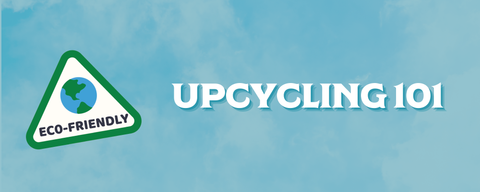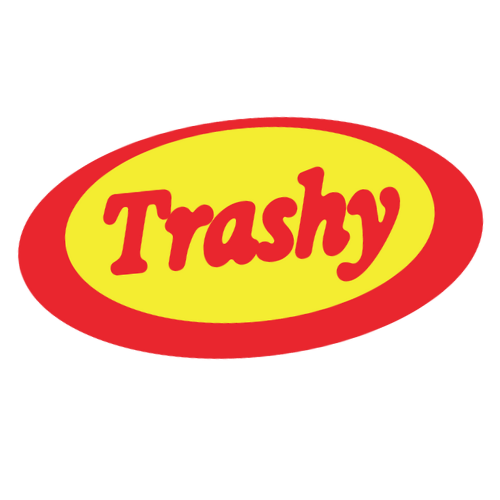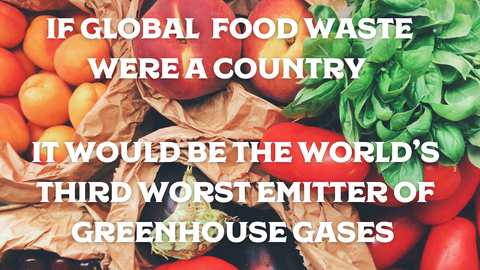
We’re throwing a super simple blog post up here to talk a bit about one of our favorite topics, upcycling, in honor of Earth Day.
Recently, the *official* definition of upcycled foods was put forth by the Upcycled Food Association. Which means, it's time to get down n dirty with some super technical definition type stuff.

There's a lot to unpack there, so first, let's chat about the general idea behind upcycling.
Why Upcycle
You know all about recycling, right? You have your plastics, your metals, your paper goods, and you take ‘em out to the blue bin to recycle. Out of sight, out of mind, because it's somebody else's job to extract the value from those resources and give them a second life.
It all stays within a closed-loop, right?
Unfortunately, that’s not really the case…
Most of the time, items are commingled and used to create materials of lesser quality, or value than the original item being recycled. So likely, your plastic bottle isn’t going to be used to create another plastic bottle of the same type. And as you "recycle" materials like plastics over and over, you better believe that they continue to degrade to materials of lesser and lesser value. Thus, many materials cannot be matched to a market to repurpose them. Simply, there isn't enough value leftover to legitimize the cost to recycle!
In fact, today, there isn’t much of a market for recycled materials (especially contaminated plastics) at all. Maybe that's because of the low cost of virgin material (i.e. petroleum) to create new plastics, or because of the sheer volume of plastics that are entering recycling markets, overloading existing infrastructure. (For more information on what’s happening to recycling markets, read here and for what this means in your specific state, read here as a start.)
Unlike recycling, upcycling turns byproducts and “waste” material into items of greater or equal value.
Instead of flowing down the food chain like recycled materials might, we can create entirely new high-value items from waste or byproduct material.
For example, turning plastic water bottles into new fibers that can be used to manufacture clothing. Many brands are doing this today!
Our favorite example of upcycling actually happens in the food industry. Queue the *upcycled foods* definition mentioned above.
How does Upcycling Work in Food?
A report from Boston Consulting Group found that the value of wasted food globally is about $1.2 trillion.
Would you believe it if we told you that we throw out over 133bn pounds of food last year, amounting to over $161bn dollars in lost value in the United States alone?!
Yup. We do.

At Pulp Pantry, we upcycle food that would otherwise go to waste - such as organic vegetable fiber, or pulp, leftover after the cold-pressed juice process. Or, rejected and surplus produce, that otherwise wouldn't have a home.
And for every pound of food upcycled - there's a huge impact: saving as much as 38 gallons of water and countless other resources (land, labor, energy and transportation costs).

Upcycling makes sense: why consume additional resources to feed people when we could be better addressing the holes in our current system?
By some estimates, in 2050, we're going to have to support (i.e. feed) a population of nearly 10 billion humans. Uhhhh.... and how exactly will we do that?
Well, there's hope that a whole industry of rising entrepreneurs and intrapreneurs that might be able to help.
What are upcycled foods?
"Upcycled foods use ingredients that otherwise would not have gone to human consumption, are procured and produced using verifiable supply chains, and have a positive impact on the environment." (Upcycled Food Association, 2020 definition)
Why does upcycling matter?
Currently, about 70% of wasted food is sent to landfill. Each year, more food reaches our landfills and combustion facilities than any other single material in our everyday trash (at 24% of the total materials sent to landfill - yikes!).

Eight percent of global greenhouse gas emissions are produced as a result of this waste. And, according to Project Drawdown, Fighting Food Waste is the #1 solution to fight climate change (you heard that right).
The act of upcycling is a rebellion against traditional norms of our linear consumption model (take → make → waste) to build a circular, restorative economy.
It’s the smart thing to do for business (saving money, squeezing value out of resources) and it’s the smart thing to do as consumers for the same reasons.
People are waking up to the fact that our current consumption model is unsustainable and detrimental not only to the planet’s health but also to our own.
Today, some estimate the upcycled food industry alone is worth $46.7 billion, and it will continue to grow! By recouping the value lost in wasted food, we can feed the planet more sustainably, and share more equitably the valuable nutrition that is currently lost in our food system's inefficiencies.
Want to get involved?
Explore some of our favorite ways the industry is upcycling so that you can support brands doing the hard work to get the ball rolling, as well as pointers for how you can get involved with zero-waste DIY's at home.

About Pulp Pantry:
Pulp Pantry turns overlooked resources like upcycled vegetable juice pulp into wholesome everyday snacks that make it convenient and delicious to eat more servings of vegetables and fiber.
Our newly launched Pulp Chips are vegetable-based, tortilla style chips made from fresh, upcycled vegetables as the first ingredient. Pulp Chips are a craveable better-for-you, better-for-the-planet snack with up to a full day's serving of fiber in each bag.





